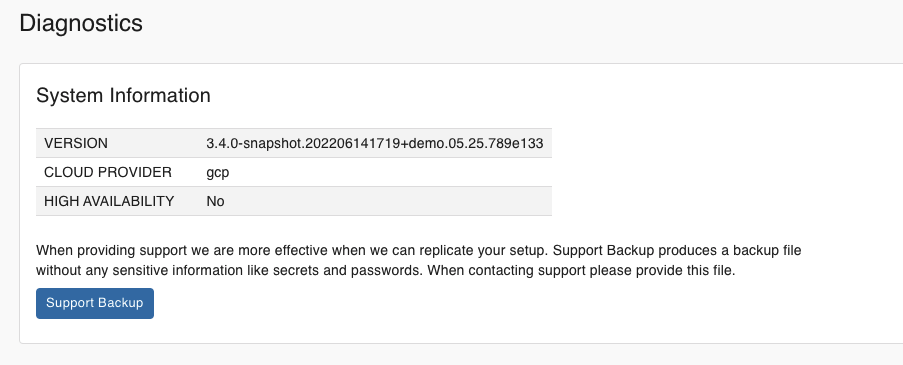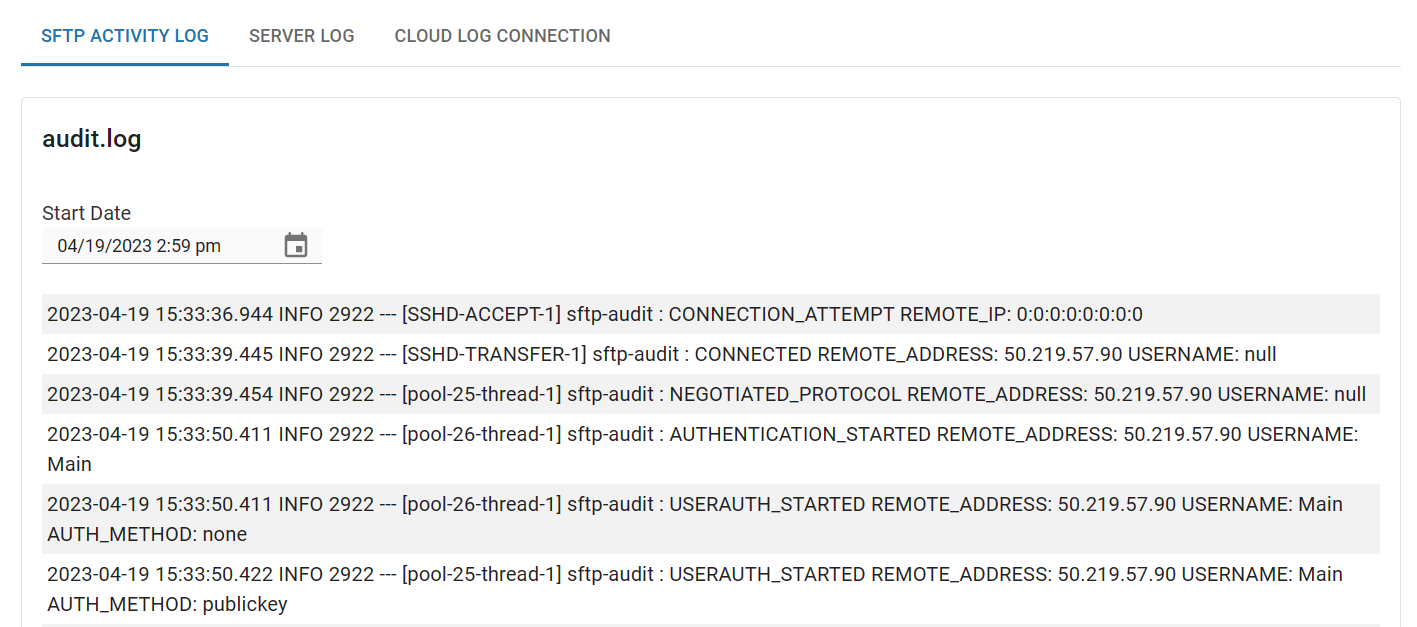Diagnostics screen
Overview
In SFTP Gateway version 3.4.1, we have added a Diagnostics screen. Here, you will find some tools that will help with troubleshooting.
System Information
The System Information screen helps you gather important information that you will need when emailing our support team.

This section provides the following information, which you can include as a screenshot when creating a support request:
- Version: The specific version of SFTP Gateway (e.g.
3.4.1) - Cloud Provider: This will be either AWS, Azure, or GCP
- High Availability: Most setups will use a single instance, but some may use HA
There's also a Support Backup button that will export your users and settings as a yml document. You can send this file to our support team so that we can try to reproduce the issue.
Note: This Support Backup file will redact sensitive information such as credentials. So, do not use this for backup and recovery purposes.
Setting Up
In order for the instance to read the logs from Log Explorer you will need to grant the instance Full permissions to the Stackdriver Logging API. This can be accomplished by configuring the API and identity management settings on your VM.
First, you will need to Stop your VM, as you cannot change the identity management settings while the instance is running. Once your instance has been stopped, under the Details tab, click Edit.
Scroll down until you see the Identity and API access section. Under Access scopes, select the Set access for each API radio button.
The API you want to configure is the Stackdriver Logging API. Set this value to Full.

Click Save to confirm your changes, and then Start the instance up again.
You should now be able to view your logs in the Diagnostics screen.
If you're still unable to view the logs, check that the Service Account of the instance has the proper logging permissions. Assigning the Logging Admin role to the service account will provide all the necessary permissions.
Log Files
We brought back a feature from SFTP Gateway version 2, where we display log files within the web admin portal. This is a convenient way to access the log files, without having to SSH into the server.

There are two main log files used by SFTP Gateway:
- Server Log: This is the Java
application.logfile that shows errors and stack traces. This log is helpful for troubleshooting difficult issues. - SFTP Activity Log: This is the SFTP audit log that records authentication attempts, along with SFTP activity such as traversing directories.
You can filter the log events by setting a Start Date. Use this to narrow down the events that took place after the issue started happening.